FLASHCARDS Ch. 5 – Inheritance Patterns, Phenotype Variability, and Allele Frequencies.
0.0(0)
0.0(0)
Card Sorting
1/20
Earn XP
Description and Tags
Study Analytics
Name | Mastery | Learn | Test | Matching | Spaced |
|---|
No study sessions yet.
21 Terms
1
New cards
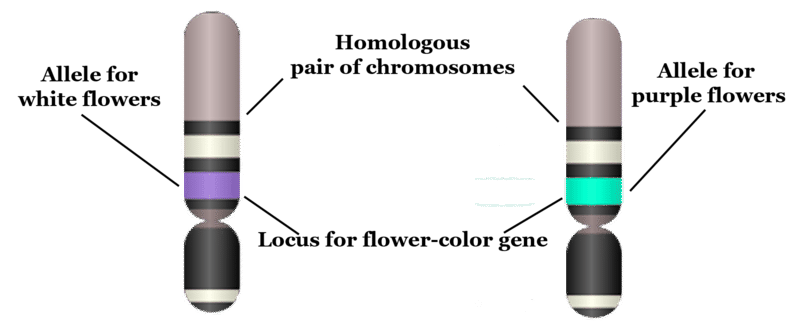
### %%What is a gene? What is the proper way to write human gene names? Do you have two alleles for every gene? Why or why not?%%
* ^^**Gene**^^: a specific sequence of DNA that encodes a particular protein
* ^^**Allel**:^^ a version of a gene (they exist in the same ==**locus**== (location) of a chromosome)
* Human gene names:
* ALL CAPS and in italics
* example: CFTR
* ^^**Allel**:^^ a version of a gene (they exist in the same ==**locus**== (location) of a chromosome)
* Human gene names:
* ALL CAPS and in italics
* example: CFTR
2
New cards
\
### What does it mean for a trait to be mono-genic or multifactorial? What is Mendelian inheritance?
### What does it mean for a trait to be mono-genic or multifactorial? What is Mendelian inheritance?
* **3 laws of Mendelian inheritance**
* ^^**Law of segregation:**^^ Offspring inherit one genetic allele form each parent
* ^^**The law of Independent Assortment:**^^ the inheritance of one trait is not dependent on the inheritance of another
* not always the case:
* **monogenic**: only one gene influences the observed characteristic
* eye-color 👁️
* **Multifactorial traits:** multiple genes and environmental factors influence observed trait
* skin color
* ^^**Law of Dominance:**^^ An organism with alternate forms of a gene will express the form that is dominant
* ^^**Law of segregation:**^^ Offspring inherit one genetic allele form each parent
* ^^**The law of Independent Assortment:**^^ the inheritance of one trait is not dependent on the inheritance of another
* not always the case:
* **monogenic**: only one gene influences the observed characteristic
* eye-color 👁️
* **Multifactorial traits:** multiple genes and environmental factors influence observed trait
* skin color
* ^^**Law of Dominance:**^^ An organism with alternate forms of a gene will express the form that is dominant
3
New cards
\
### What does it mean for a trait to be mono-genic or multifactorial? What is Mendelian inheritance?
### What does it mean for a trait to be mono-genic or multifactorial? What is Mendelian inheritance?
* **monogenic**: only one gene influences the observed characteristic
* eye-color 👁️
* **Multifactorial traits:** multiple genes and environmental factors influence observed trait
* skin color
* Mendelian inheritance → always monogenic
* eye-color 👁️
* **Multifactorial traits:** multiple genes and environmental factors influence observed trait
* skin color
* Mendelian inheritance → always monogenic
4
New cards

### %%Dominant and recessive phenotypes are not the only phenotypes. What are some other examples?%%
* **Incomplete Dominance:** the phenotype of a heterozygote is intermediate between the two homozygotes
* *example*: ( picture)
\
* **Co-dominance**: both dominant alleles contribute equally to the phenotype
* *example*:
* striped Egggplant
* ABO blood group system
* \
* **Epistasis:** the expression if one gene modifies the phenotype during the presence of one or more other genes
* example: baldness + dog furr
* *example*: ( picture)
\
* **Co-dominance**: both dominant alleles contribute equally to the phenotype
* *example*:
* striped Egggplant
* ABO blood group system
* \
* **Epistasis:** the expression if one gene modifies the phenotype during the presence of one or more other genes
* example: baldness + dog furr
5
New cards

\
### %%Be able to read and interpret which of the five basic inheritance patterns a pedigree is depicting.%%
### %%Be able to read and interpret which of the five basic inheritance patterns a pedigree is depicting.%%
* \*\*Pedigrees (\*\****stammbäume***): Graphical representation of a family tree with standardized symbols
* Types:
* **Autosomal dominant**
* **Autosomal recessive**
* **X-linked dominant**
* **X-linked recessive**
* **Y-linked (patrilineal)**
* **Mitochondrial (matrilineal)**
* Vocabulary :
* Proband proposito=male proposita=female family member whom the family is first ascertained: brought to the attention of health care professionals
* Kindred Extended family covering many generations
* Sib (sibling) brother or sister
* Sibship: a series of brothers and sisters
* Types:
* **Autosomal dominant**
* **Autosomal recessive**
* **X-linked dominant**
* **X-linked recessive**
* **Y-linked (patrilineal)**
* **Mitochondrial (matrilineal)**
* Vocabulary :
* Proband proposito=male proposita=female family member whom the family is first ascertained: brought to the attention of health care professionals
* Kindred Extended family covering many generations
* Sib (sibling) brother or sister
* Sibship: a series of brothers and sisters
6
New cards
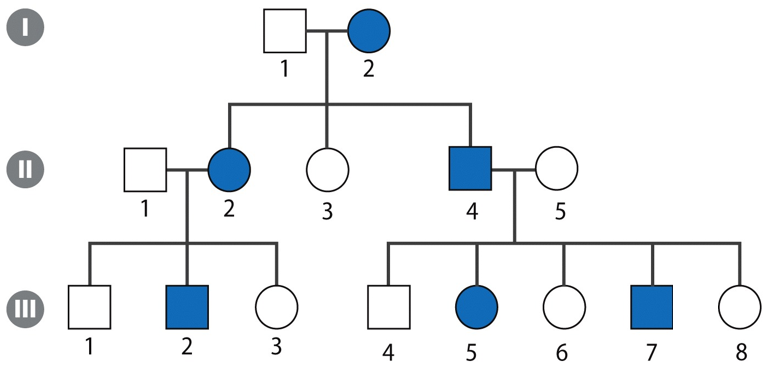
Which inheritance pattern? \n
**Autosomal dominant**
•Either sex is affected
•50% chance of affected child
•Usually at least one affected parent
*→ De novo* or germline mutation
→ Exceptions when **non-penetrance**
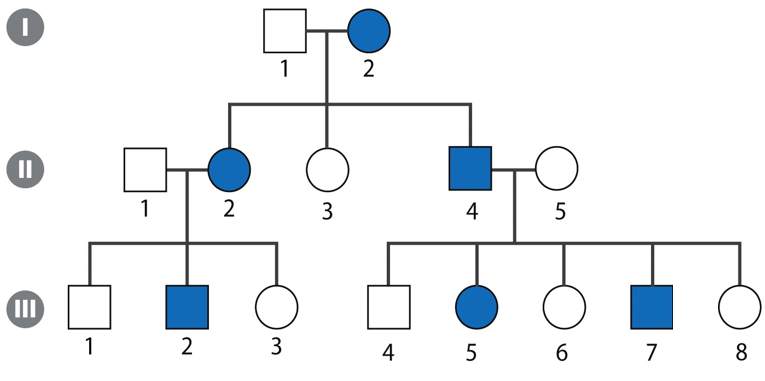
7
New cards
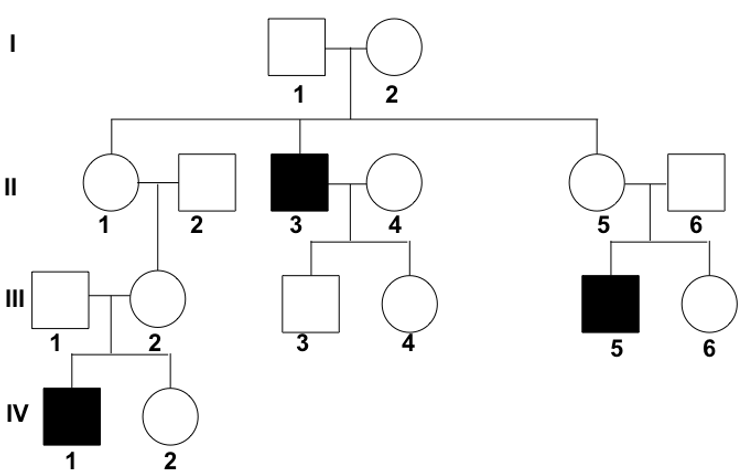
Which inheritance pattern?
**Autosomal recessive**
* Usually unaffected parents
* Parents usually asymptomatic carriers
* 25% chance of affected child
* after birth of affected child
* Both parents must be carriers
* Increased incidence of parental consanguinity
* Either sex is affected
\
* Usually unaffected parents
* Parents usually asymptomatic carriers
* 25% chance of affected child
* after birth of affected child
* Both parents must be carriers
* Increased incidence of parental consanguinity
* Either sex is affected
\
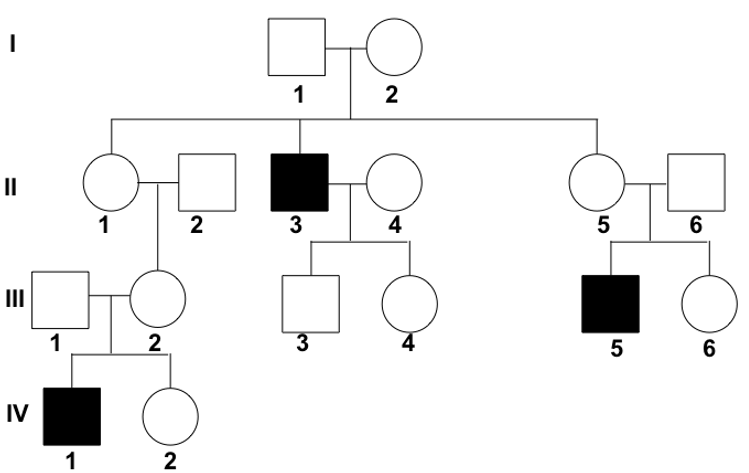
8
New cards
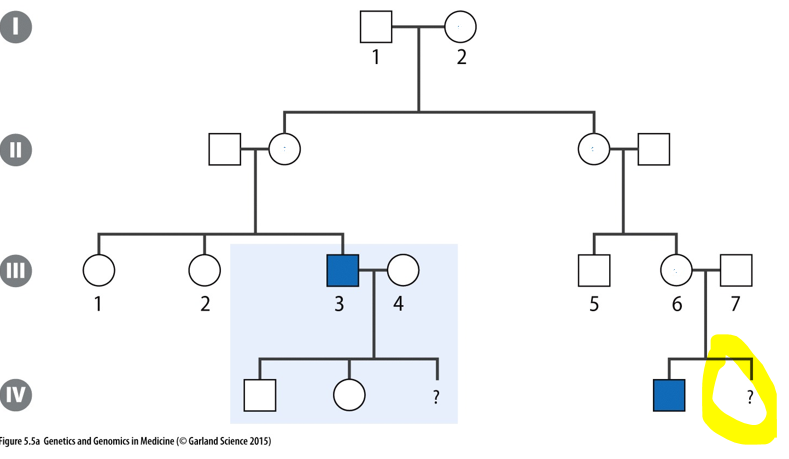
Which inheritance pattern?
risk dor male child?
risk for female child?
risk dor male child?
risk for female child?
**X- linked recessive disease**
\
risk dor male child? ½
risk for female child? None ( ½ carrier)
\
\
* Usually unaffected parents
* Mother is usually asymptomatic carrier
* Mother may have affected male relatives
* Affects mostly only males
* Females may be affected
* Dad is affected and mother is carrier
* X-inactivation may play a role
\
risk dor male child? ½
risk for female child? None ( ½ carrier)
\
\
* Usually unaffected parents
* Mother is usually asymptomatic carrier
* Mother may have affected male relatives
* Affects mostly only males
* Females may be affected
* Dad is affected and mother is carrier
* X-inactivation may play a role
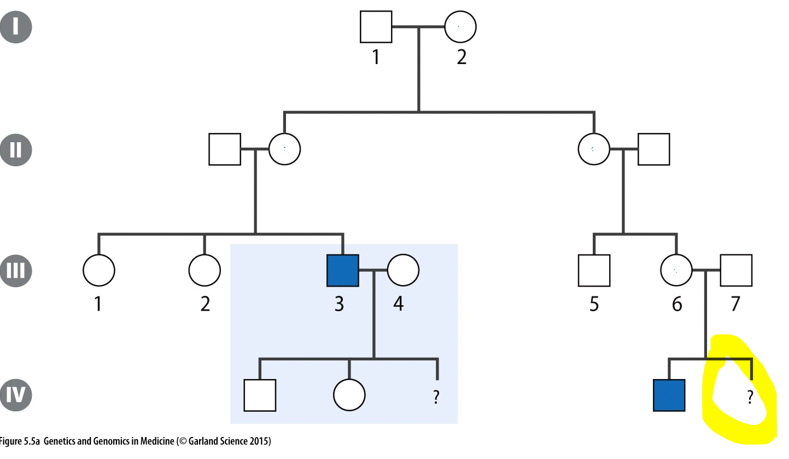
9
New cards
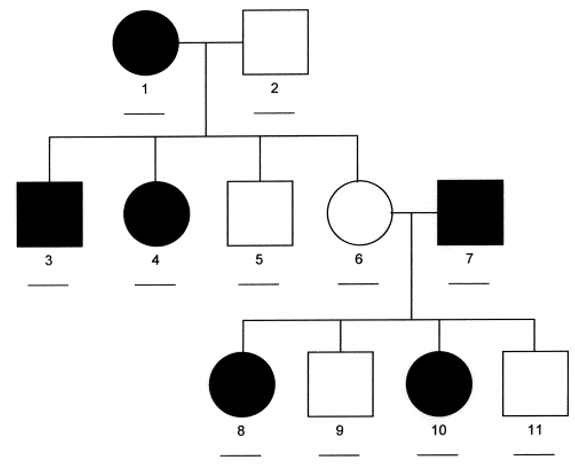
Which inheritance pattern?
**X-linked Dominant Inheritance**
* Affects either sex (more often females)
* Often deadly for males
* X-inactivation may play a role
* If mother is affected
* 50% chance of child being affected
* Regardless of the sex of the offspring
* If father is affected
* 100% chance daughter is affected
* 0% chance son is affected
\
* Affects either sex (more often females)
* Often deadly for males
* X-inactivation may play a role
* If mother is affected
* 50% chance of child being affected
* Regardless of the sex of the offspring
* If father is affected
* 100% chance daughter is affected
* 0% chance son is affected
\
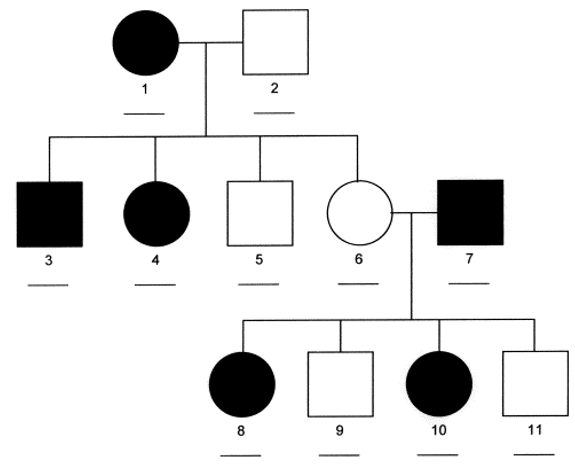
10
New cards
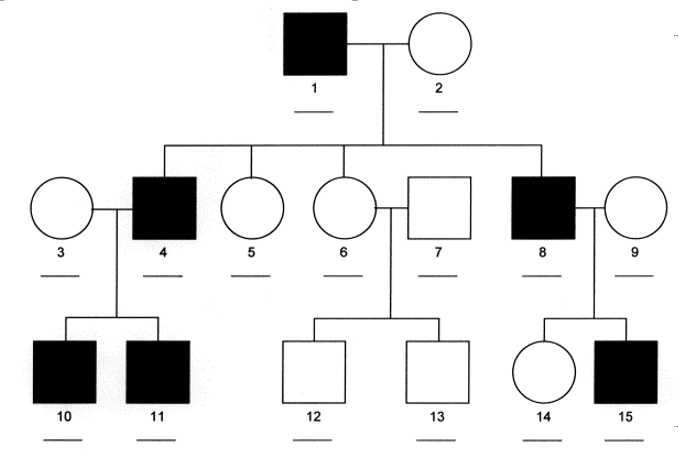
Which inheritance pattern?
**Y-linked inheritance**
\
* Only males are affected
* Only males are carriers
* If father is affected
* 100% chance son is affected
* 0% chance daughter is affected
\
* Only males are affected
* Only males are carriers
* If father is affected
* 100% chance son is affected
* 0% chance daughter is affected

11
New cards
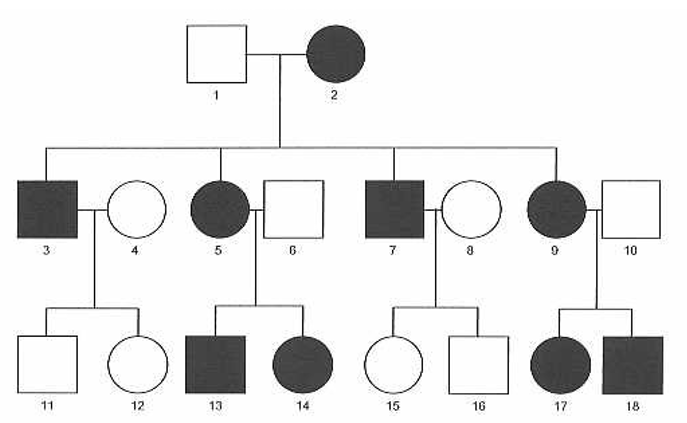
Which inheritance pattern?
Matrilineal inheritance
* when mother is effected than all children are also effected 100%
* when father is effected then non the th children have it
* when mother is effected than all children are also effected 100%
* when father is effected then non the th children have it
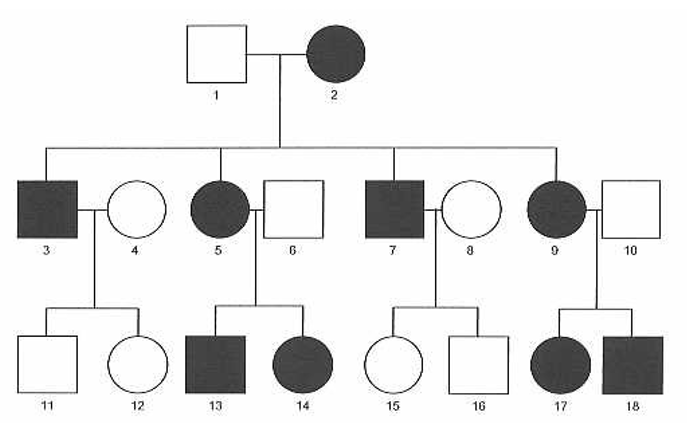
12
New cards
### %%What is consanguinity? How is the coefficient of relationship calculated?%%
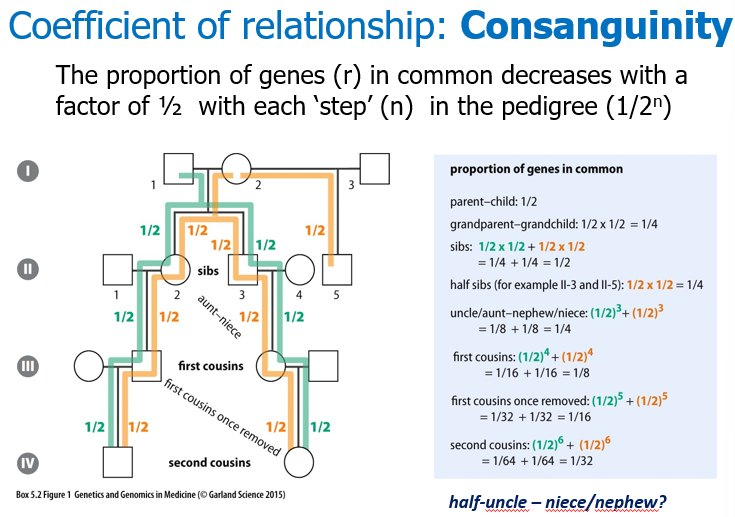
13
New cards
Explain how men are constitutionally hemizygous for most genes on the X-chromosome and women are functionally hemizygous. Why most genes and not all genes? True or False?: Males are never heterozygous for Y-linked sequences. Be able to explain.
* **constitutionally hemizygous** → if you only have one X chromosome
* **functionally hemizygous** → in females, due to X-inactivation
* FALSE: because men only have one Y chromosome therefore they are hemizygous
* **functionally hemizygous** → in females, due to X-inactivation
* FALSE: because men only have one Y chromosome therefore they are hemizygous
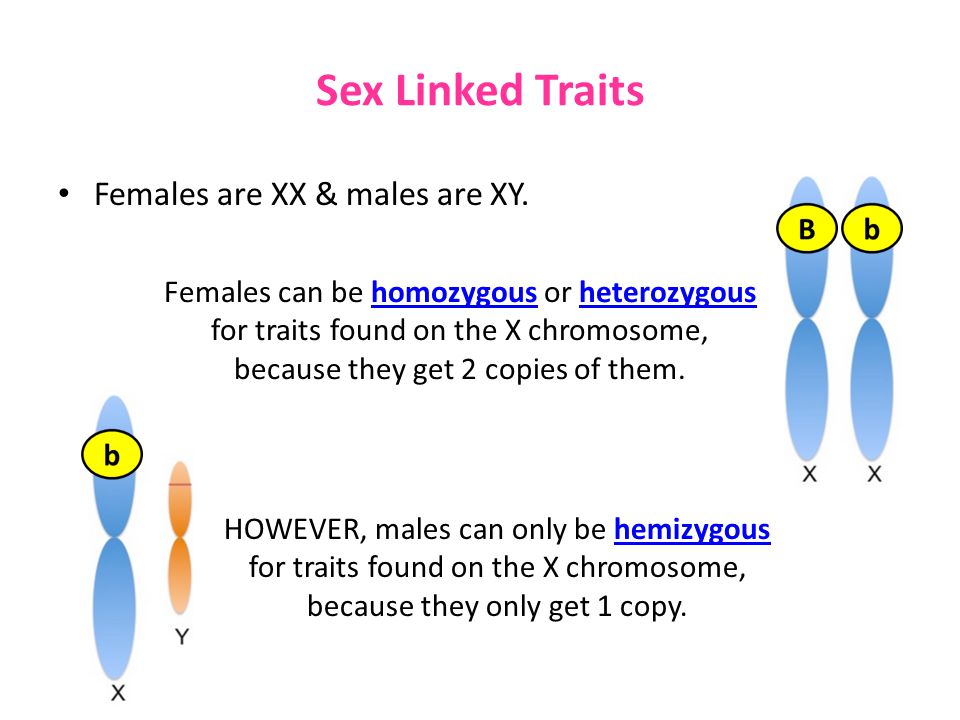
14
New cards
### %%What are examples of patrilineal and matrilineal inheritance? What is heteroplasmy?%%
* **patrilineal inheritance**: passing down traus from the father to son
* *example*: Y-linked traits ability to produce sperm
* **matrilineal inheritance:** passing down the trait from mother to offspring( all sexes)
* example: mitochondrial DNA
* **Heteroplasmy**: the presence of more than one type of mitochondrial DNA within an individual cells
* due to mutations in mitochondrial DNA during cells division resulting in a mixture of normal and mutated mitochondria DNA
* *example*: Y-linked traits ability to produce sperm
* **matrilineal inheritance:** passing down the trait from mother to offspring( all sexes)
* example: mitochondrial DNA
* **Heteroplasmy**: the presence of more than one type of mitochondrial DNA within an individual cells
* due to mutations in mitochondrial DNA during cells division resulting in a mixture of normal and mutated mitochondria DNA
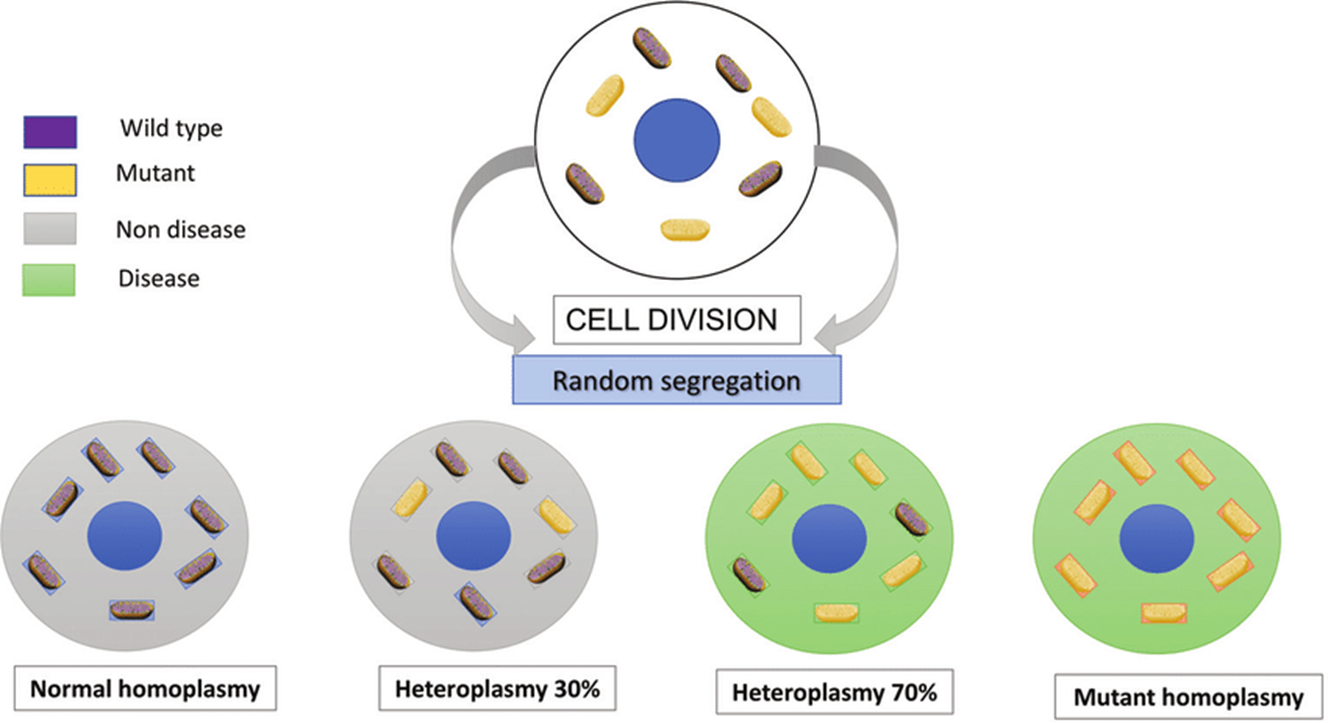
15
New cards
### %%Why is the ascertainment bias high for recessive conditions?%%
* different l**ocus heterogeneity** → the mutations from parents are on a different location on chromosome
* **Allelic heterogeneity** refers to the presence of different mutations within the same gene that can cause the same phenotype
* a different mutations of Cystic fibrosis all cause cystic fibrosis
* Phenotypic heterogeneity refers to the same genotype results in different phenotype
* **Allelic heterogeneity** refers to the presence of different mutations within the same gene that can cause the same phenotype
* a different mutations of Cystic fibrosis all cause cystic fibrosis
* Phenotypic heterogeneity refers to the same genotype results in different phenotype

16
New cards
### %%What is penetrance? Why do we not always see 100% penetrance?%%
* **Penetrance**: the likelihood of an individual with a particular genetic mutation developing the condition associated with that mutation
* example, allergies
* **age-related penetrate** due to
* incremental tissue death
* loss of function of the normal protein and toxic accumulation of mutant version( pre-diabetic)
* inability to repair some sort of environmental damage
* second mutation ( two-hit)
* **expressivity**: the degree of severity or extent of expression
* example, allergies
* **age-related penetrate** due to
* incremental tissue death
* loss of function of the normal protein and toxic accumulation of mutant version( pre-diabetic)
* inability to repair some sort of environmental damage
* second mutation ( two-hit)
* **expressivity**: the degree of severity or extent of expression
17
New cards
### %%What is the difference between a mosaic organism and a chimera? How could each occur?%%
* **mosaic** organisms: mutation during embryonic development resulting in some cell having the mutations while others do not
* **chimera**: when a person has at least two distinct genotypes within their body due to a fusion of two embryos during development
* **chimera**: when a person has at least two distinct genotypes within their body due to a fusion of two embryos during development
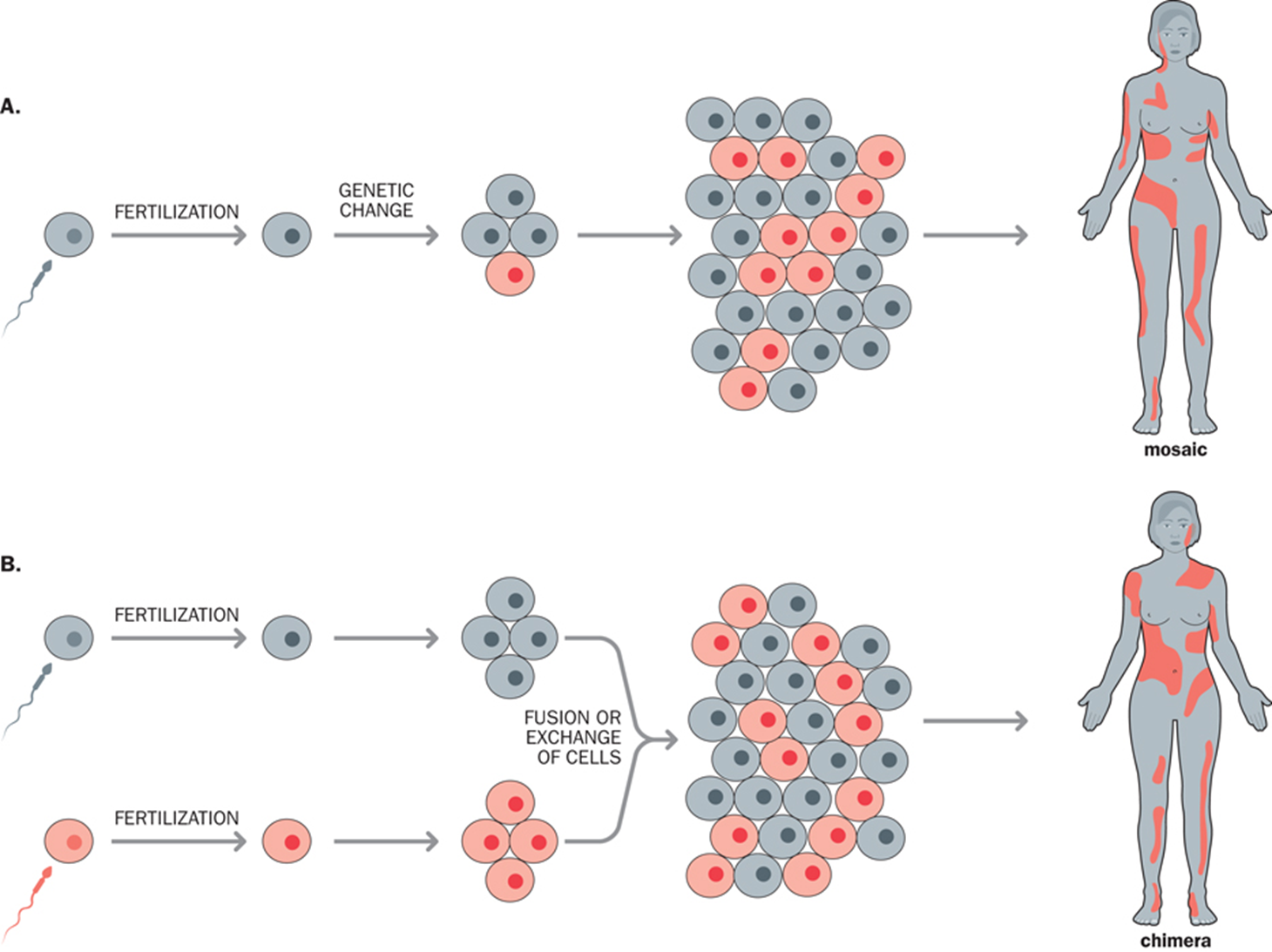
18
New cards
### %%What are assumptions made by the Hardy-Weinberg Law?%%
* *The law states that under certain conditions, the frequencies of alleles and genotypes in a population will remain constant from generation to generation.*
* Allele frequencies are not changing
* The population size is infinite
* Mutations are not occurring
* Mating is random
* There is no purifying selection
* There is no gene flow
* Allele frequencies are not changing
* The population size is infinite
* Mutations are not occurring
* Mating is random
* There is no purifying selection
* There is no gene flow
19
New cards
### %%Be able to explain how genetic drifts, bottle necks, the founder effect influence allele frequencies.%%
**geneflow**: the transferring of genetic diversity among population resulting in a change on allele frequencies
**genetic drift:** the random fluctuations of allel frequencies within a population
**bottleneck event:** an event that causes a severe reduction in population size and the next generation only has the alleles of the small population
founder effect: a type of genetic drift when small group in populations establishes new population and normally less frequent alleles become more common in new population
**genetic drift:** the random fluctuations of allel frequencies within a population
**bottleneck event:** an event that causes a severe reduction in population size and the next generation only has the alleles of the small population
founder effect: a type of genetic drift when small group in populations establishes new population and normally less frequent alleles become more common in new population
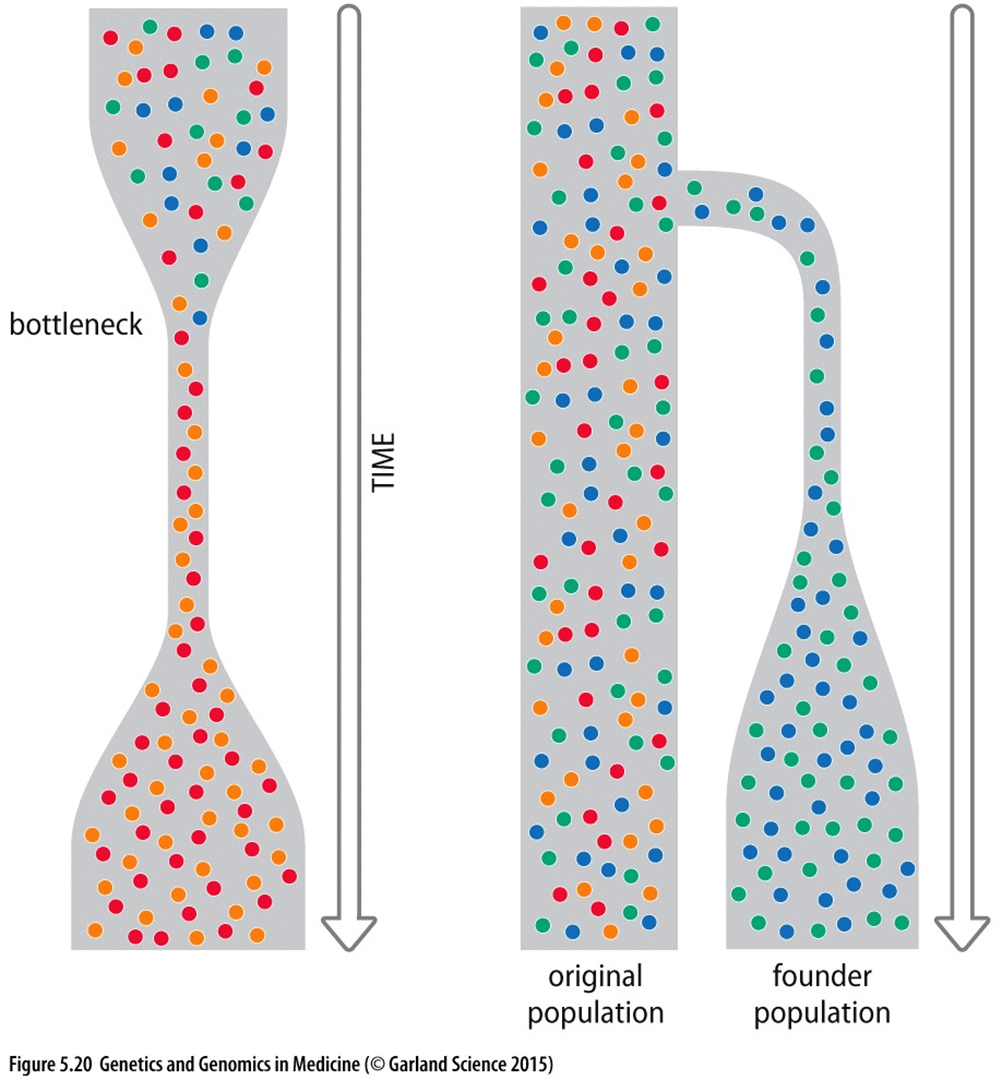
20
New cards
\
### %%Why do some genetic mutations remain in the population? Are high mutation rates and unstable genes enough to explain why harmful disease alleles persist? What is balancing selection?%%
### %%Why do some genetic mutations remain in the population? Are high mutation rates and unstable genes enough to explain why harmful disease alleles persist? What is balancing selection?%%
* because mutations are not harmful to current environment or press after giving birth to children
* tumors
* most disease are in ressiev forms → carries
* must mutations are neutral
* some mutations are advantages to enviriment
* malaria and sickle cell anemia
* Balancing selection: a type of natural selection which maintains genetic diversity → heterozygous genotype has higher fitness ( due to better adaptation) than homozygous genotypes leading to maintenance of both alles in population
* tumors
* most disease are in ressiev forms → carries
* must mutations are neutral
* some mutations are advantages to enviriment
* malaria and sickle cell anemia
* Balancing selection: a type of natural selection which maintains genetic diversity → heterozygous genotype has higher fitness ( due to better adaptation) than homozygous genotypes leading to maintenance of both alles in population
21
New cards
### %%Be able to explain selective sweeps, “hitchhiking alleles” and loss of heterozygosity. *(more in 11.4)*%%
* **selective sweeps:** occur when beneficial mutations arise in a population and rapidly increase due to positive selection. While the mutation spreads it sweeps out or eliminates nearby genetic variation
* **hitchhiking alleles**: when an allele changes frequency not because it itself is under natural selection but because it is near another gene that is undergoing a selective sweep and that is on the same DNA chain.
* **loss of heterozygosity:** Heterozygosity refers to the presence of different alleles at a given locus or gene in an individual, and loss of heterozygosity occurs when one allele becomes fixed in the population due to positive selection. This results in a loss of genetic variation at the affected locus or gene.
* **hitchhiking alleles**: when an allele changes frequency not because it itself is under natural selection but because it is near another gene that is undergoing a selective sweep and that is on the same DNA chain.
* **loss of heterozygosity:** Heterozygosity refers to the presence of different alleles at a given locus or gene in an individual, and loss of heterozygosity occurs when one allele becomes fixed in the population due to positive selection. This results in a loss of genetic variation at the affected locus or gene.